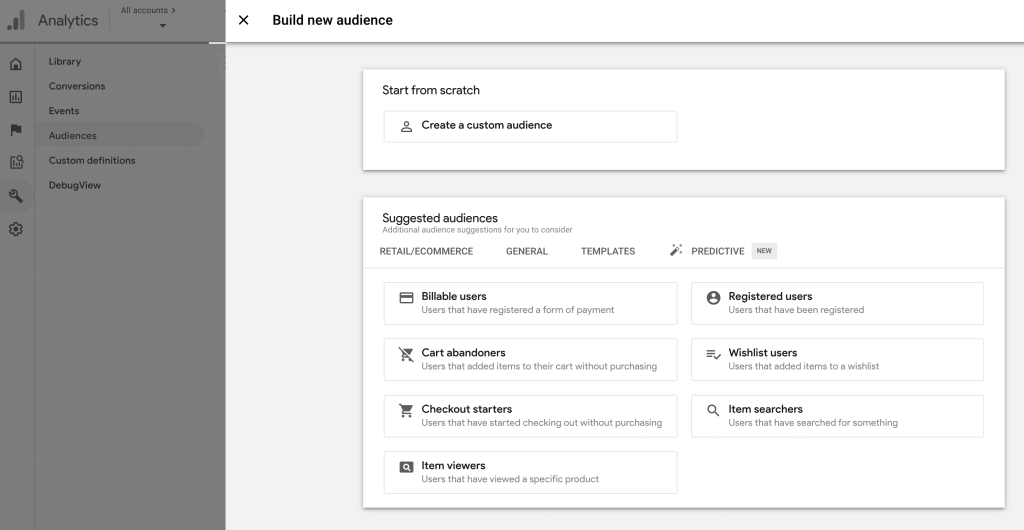Understanding the Significance of Segments
Segments in GA4 are essentially subsets of your data that allow for an in-depth analysis, offering insights that go beyond the superficial level of aggregate data. Unlike filters, which are confined to specific reports or explorations, segments are versatile and can be applied across various analytical reports, shedding light on nuanced user behaviors and trends.
Why Segments Are Crucial for Marketers
Relying solely on aggregate metrics such as total traffic, sessions, or conversions provides a limited view of a website’s performance. Segments, however, empower marketers to delve deeper, enabling them to address fundamental questions about their traffic sources, user demographics, device preferences, and engagement patterns across different pages. For instance, understanding which channels drive the most traffic or which pages capture users’ attention can inform targeted marketing strategies and website optimizations.
Diverse Types of Segments in GA4
GA4 grants you three distinct segment types, each offering a unique perspective:
- User Segments: Analyze specific sets of users based on attributes like location, language, or acquisition channel.
- Session Segments: Focus on sessions meeting specific criteria, like time of day or engagement duration, revealing patterns within those sessions.
- Event Segments: Dive into specific events that match defined conditions, regardless of users or sessions – perfect for understanding user interactions with key elements on your website.
This granularity allows you to tailor your analysis to individual facets of user interaction, from broad behavioral patterns to specific clicks and engagements.
Building and Applying Segments
Creating segments in GA4 is a straightforward process that begins in the “Explore” section. Here, marketers can define the criteria for their segments, whether they’re interested in analyzing user behaviors, session patterns, or specific events. The flexibility of segments in GA4 enables a comprehensive comparison of data subsets, revealing actionable insights into user journeys and interactions.

Read more: https://support.google.com/analytics/answer/10427338
The Enhanced Utility of Segmentation
The introduction of event-scoped segments in GA4 marks a significant enhancement, providing marketers with the tools to conduct a more nuanced analysis of user behavior. By effectively utilizing segmentation, marketers can uncover actionable insights, guiding strategic decisions to optimize website performance and user engagement.
Leveraging Google Analytics Audiences
In addition to segments, GA4 allows for the creation of audiences—groups of users categorized based on criteria such as demographics, acquisition channels, or behaviors. These audiences can be targeted in marketing campaigns, offering a tailored approach to reach specific user segments.
GA4 introduces event-scoped segments, a game-changer for analyzing user behavior. Imagine understanding which types of users trigger specific events on your website – this newfound power fuels strategic decisions to optimize user journeys and maximize engagement.
Audiences: A Tool for Targeted Marketing
GA4 empowers you to create audiences based on demographics, acquisition channels, or behaviors. Target these audiences in your marketing campaigns, reaching specific user segments with tailored messages and offers. Create an audience of newsletter subscribers for a targeted re-engagement campaign, or focus on high-value customers for special promotions. The possibilities are endless. For example, creating an audience of users who have recently signed up for a newsletter or made a purchase allows for more focused marketing efforts and optimization strategies.
Conclusion
The capability to segment data and create targeted audiences in GA4 offers digital marketers a powerful suite of tools for in-depth analysis and strategic marketing. By harnessing the full potential of segments and audiences, marketers can gain a deeper understanding of their website visitors, enabling informed decisions that drive website performance and user engagement.
Incorporating segments and audiences into your digital marketing strategy not only enhances your analytical capabilities but also provides a foundation for more effective and targeted marketing campaigns. As the digital landscape continues to evolve, the ability to adapt and leverage these advanced features in GA4 will be crucial for staying ahead in the competitive world of digital marketing.
